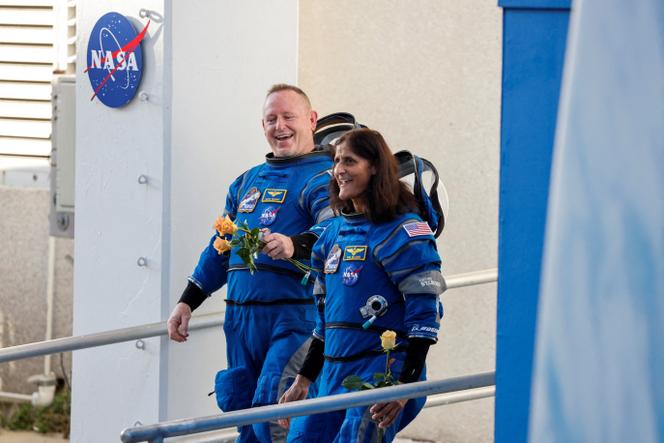


It was supposed to be an eight-day escapade, but it could last until 2025. After weeks of denial from NASA, reality has set in: American astronauts Barry Wilmore and Sunita Williams are indeed shipwrecked in space, stranded on the International Space Station (ISS). Boeing's Starliner spacecraft, which sent them into orbit in early June, is so far deemed incapable of returning them safely to Earth.
NASA could therefore call on Elon Musk and his company SpaceX, pushing the astronauts' date of return back to February 2025. "We're in a kind of a new situation here in that we've got multiple options," said former astronaut Ken Bowersox, NASA's associate administrator. "We don't just have to bring a crew back on Starliner, for example. We could bring them back on another vehicle."
The case threatens the very existence of Boeing's Starliner space program and makes SpaceX, the US federal authorities' preferred spacecraft manufacturer, more reliable and cheaper than ever before. The competition between Boeing and Elon Musk's firm began in 2014, when NASA awarded $4.2 billion to Boeing and $2.6 billion to SpaceX, to create vehicles to carry astronauts into space.
Musk's company successfully completed its first manned flight in May 2020 to applause from then-president Donald Trump, and has since completed eight manned flights to the ISS for NASA. A first since the shutdown of NASA's Space Shuttle in 2011. At the time, the Boeing project was racking up setbacks, with 80 failures identified in an independent audit. Its program was years behind schedule, with cost overruns in excess of $1.4 billion.
The fiasco of this first manned flight is a further humiliation for Boeing, which pushed ahead with sending the astronauts in the spring. In May, the flight had to be canceled due to a "small" helium leak. On June 1, the flight was canceled due to a computer failure 3.5 minutes before launch. The astronauts eventually took off on June 5, but in retrospect it appears that Boeing, which is in the crosshairs of the US authorities for its safety failures and repeated lies in the field of civil aviation, was not up to scratch.
During the approaching flight to the ISS, helium leaks continued, while five of the Starliner's 28 thrusters stopped at some point during the flight. Boeing had claimed to have repaired four, neutralized one and minimized the problems, but NASA wanted to reinforce the safety of the return trip.
The matter is reportedly the subject of heated disagreements within NASA and with Boeing. The main problem concerns undocking from the station: If too many thrusters fail again before the capsule has moved far enough away, Starliner could become uncontrollable and collide with the ISS. The thrusters are also needed to give the capsule sufficient energy to leave orbit and return to Earth. This is a very dangerous journey, as the extreme speed heats up the capsule as it enters the atmosphere.
You have 33.84% of this article left to read. The rest is for subscribers only.
